Porosity
Type of resources
Available actions
Topics
Keywords
Contact for the resource
Provided by
Years
Formats
Representation types
Update frequencies
Scale
-

These images were acquired using micro computed tomographic imaging of 7 sandstone plugs taken at various depths in the Sellafield borehole 13B. SF696 (63.8 m), SF697 (76.1 m), SF698 (96.98 m), SF699 (126.27 m), SF700 (144.03 m), SF701 (172.16 m) and SF702 (181.39 m). These samples are further detailed and analysed in the following article: http://dx.doi.org/10.1144/petgeo2020-092
-
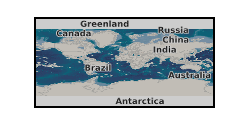
P* data obtained through hydrostatic loading experiments, using triaxial experimental apparatus, as well as yield curve data obtained through differential loading tests, prior to the discovery of P* for different synthetic sandstones. The methodology used was taken from Bedford et al. (2018, 2019). Grain size analysis data obtained using a Beckman Coulter LS 13 320 laser diffraction particle size analyser. Particle analysis was conducted on five different synthetic sandstones with different grain size distributions. Secondary electron and backscatter electron SEM images for natural and synthetic sandstones. Secondary electron images were stitched together to form a whole core image. They were then binarised following the methodology of Rabbani and Ayatollahi. (2015). Hexagon grid size data used to obtain the correct grid size for performing porosity analysis across an mage using Fiji software (Brown, 2000). Bedford, J. D., Faulkner, D. R., Leclère, H., & Wheeler, J. (2018). High-Resolution Mapping of Yield Curve Shape and Evolution for Porous Rock: The Effect of Inelastic Compaction on 476 Porous Bassanite. Journal of Geophysical Research: Solid Earth, 123(2), 1217–1234. Bedford, J. D., Faulkner, D. R., Wheeler, J., & Leclère, H. (2019). High-resolution mapping of yield curve shape and evolution for high porosity sandstone. Journal of Geophysical Research: Solid Earth. Brown, G. O., Hsieh, H. T., & Lucero, D. A. (2000). Evaluation of laboratory dolomite core sample size using representative elementary volume concepts. Water Resources Research, 36(5), 484 1199–1207. Rabbani, A., & Ayatollahi, S. (2015). Comparing three image processing algorithms to estimate the grain-size distribution of porous rocks from binary 2D images and sensitivity analysis of the grain overlapping degree. Special Topics & Reviews in Porous Media: An International Journal, 6(1).
-

Unconfined compressive strength data for rocks from TilTil and ElTeniente mines in Chile, plus basic index tests (porosity, density) and Elastic wave velocity for selected samples. Laboratory data collected as part of NERC grant NE/W00383X/1:Geological safety and optimisation in mining operations: towards a new understanding of fracture damage, heterogeneity and anisotropy.
-
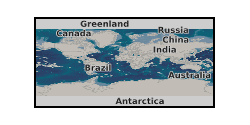
This data is described in section 6.4 of the following paper, Three-Field Block Preconditioners for Models of Coupled Magma/Mantle Dynamics by Rhebergen et al DOI:10.1137/14099718X
-

Geochemical and petrophysical data acquired on intact and damage zone rock samples for two localities along the San Andreas Fault, Mojave section. Data used in the publication entitled "Chemically altered Pulverized granite along the Mojave section of the SAF shows evidence for large-scale heat transfer by post-seismic fluid flow and fluid overpressure at depth" by F.M Aben et al., in revision at the journal Geochemistry, Geophysics, Geosystems. Rock samples (33 samples at Lake Hughes locality, 27 at Littlerock locality) were analysed for porosity, grain- and bulk density, and chemical composition (XRF analysis). Mineral content was established from point counting on thin sections for 9 samples (Littlerock locality) and 13 samples (Lake Hughes locality). The results of these analyses are presented in this dataset. In addition, the samples were grouped in three categories: intact, damaged, and pulverized. Statistical analysis was performed on the grouped data to identify statistically significant changes between the groups. The statistical analysis results are presented here as well.
-
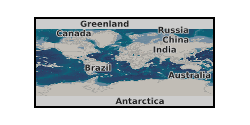
These data contain time series of stress, strain, confining pressure, pore pressure, pore volume, permeability and elastic wave velocities of samples of Purbeck Limestone deformed under hydrostatic and triaxial conditions at room temperature. All samples were saturated with decane as pore fluid.This dataset is used and fully described/interpreted in the paper: Brantut, N., M. Baker, L. N. Hansen and P. Baud, Microstructural control of physical properties during deformation of porous limestone, submitted to J. Geophys. Res.
-
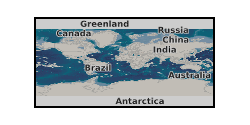
Data used for the peer-reviewed manuscript entitled 'Variation of hydraulic properties due to dynamic fracture damage: Implications for fault zones' by Aben, FM, Doan, M-L, and Mitchell, TM. Manuscript currently in revision for Journal of Geophysical Research. Data consists of: Text files with the mechanical data timeseries (confining pressure, and pore volume and pore fluid pressure for two pore fluid pressure intensifiers) obtained during permeability measurements of deformed rock samples. File name contains sample number. Additional two mechanical data files (calib15 and calib18) are calibration files for the pore volume measurements. Manually traced X-ray CT images obtained on six samples.
-
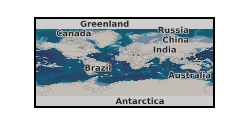
Stress-Dependent permeability data for samples of the Glasgow Main coal and the overlying mudstone and sandstone from the UKGEOS research borehole GGC01. Associated XRD mineralogy, Helium Porosity, bulk and matrix densities are also included. Samples and data are derived from the UK Geoenergy Observatories Programme funded by the UKRI Natural Environment Research Council and delivered by the British Geological Survey.
-
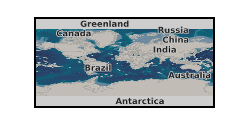
Porosity of core samples SSK111464 (sandstone) and SSK111465 (shale) calculated using backscatter electron SEM images of carbon coated thin sections processed in ImageJ Fiji software. 85 images of SSK111464 (sandstone) used and 74 images of SSK111465 (shale) at various magnifications. Core samples from UKGEOS Glasgow Observatory, borehole GGC01. Samples and data are derived from the UK Geoenergy Observatories Programme funded by the UKRI Natural Environment Research Council and delivered by the British Geological Survey.
-
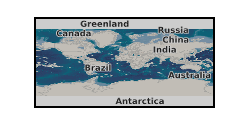
We examine the role of cement on compaction band formation by performing triaxial tests on three sandstones, Bentheim, Castlegate and a synthetic sandstone which possess very similar porosities (~26-29%) and grain sizes (~230-300 µm), but which are cemented differently, with syntaxial quartz overgrowths, clay, and amorphous quartz cement respectively. Each sample was taken to 5% axial strain at a starting effective stress equivalent to 85% of its hydrostatic yield (P*) value, which were identified from yield under hydrostatic loading. These data for the 3 samples are presented as matlab data files. Post-deformation, each of the 3 cores underwent backscatter SEM and subsequent image analysis to examine any localised variations in porosity and grain size. These data are presented as csv files. Discrete bands form in each of the 3 sandstones but are distributed differently across each sample. Our results suggest that cement type plays a significant role in the micromechanics of deformation within each of the sandstones, which in turn, determines where the compaction bands nucleate and develop. These results may provide a starting point to investigate the role of cement on compaction localisation further.
 NERC Data Catalogue Service
NERC Data Catalogue Service